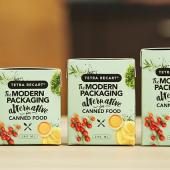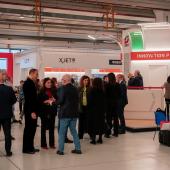Entrepreneurial biodiversity
As clear as water. Mineral water obviously, if the vision is that of a Sardinian entrepreneur who has placed the specificity and the culture of his local territory as the fulcrum of growth and success. Mauro Solinas views the state of the art of the sector and tells us about Acqua Smeraldina. By Stefano Lavorini
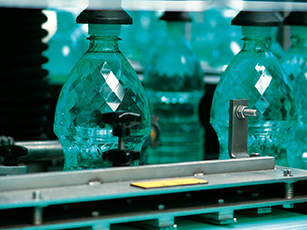 It would be nice to simply say water. Mineral water, natural and health-giving, without other superlative adjectives or improbable and false narrations.
It would be nice to simply say water. Mineral water, natural and health-giving, without other superlative adjectives or improbable and false narrations.
But the market (I don’t believe it is the consumers) more than detailed, circumstantiated information, more than demonstrable scientific data, seems to have a thirst for awesomeness, for ostentation, that is for dreams.
Doing so one has ended up by forgetting that water is essentially a source of nourishment - fundamental to life itself, with an intrinsic value - which appears to have been downgraded to a simple service “attribute”.
We spoke of what bottling mineral water entails today with Mauro Solinas, CEO of ALB SpA (Tempio Pausania) that with the brand Acqua Smeraldina is a market leader in Sardinia and not only there.
According to the figures given by Censis in May, with 192 litres per year per person, Italy is the first country in Europe and the second in the world for per capita consumption of bottled water. A full 61.8% of Italian families buy mineral water spending on average 234 euros a year. How do you interpret these figures, considering that the economic crisis has eroded the spending potential of consumers?
The figures are not comforting. Consumption in fact is driven by the mistrust that many have in the water that comes out of the tap, by worry related to alarms as to its drinkability and, in some areas, by the not infrequent interruptions in service. Little or nothing has been done to teach the consumers how to correctly read the labels of water as a product, so as to be able to make the choice best for their own health needs and taste, with the ultimate result that mineral water has turned from being something of value to a commodity. In other terms, the entire attention is on price and less on quality.
This trend seems also be mirrored in the level of performance of the containers. For example, there are PET bottles that seem like semi-rigid containers. Does a limit exist to this race towards saving?
Packaging is fundamental because it helps to safeguard the water, enabling its distribution and sale. When though one speaks of half litre PET bottles that weigh 11 grams, stating that they are ecocompatible, that they enable saving raw material and energy, we are very close to the threshold beyond which one no longer guarantees the service value of the container (rigidity) and the shelf life of the product (barrier effect).
Often I wonder whether “ECO” stands for ecology or economizing.
On our part we place max attention on consumer safety and place marketing issues after that. We use PET bottles of 5 different formats, with capacities from 1.5 to 0.25 litres.
Similarly for glass we have a complete range of disposable and returnable bottles, comprising 4 formats with capacities from 1 to 0.25 litres.
On top of that, and we are probably the only ones in Italy, we also pack Acqua Smeraldina in Tetra Pack’s Tetra Prisma Aseptic, that combines visual appeal with great versatility.
It is evident that the very choice of materials, the design of the containers and the range of formats are strongpoints in our offer.
Have you ever thought of using PLA containers?
If you don’t respect the consumers you can’t even respect yourself. This is what my parents taught me..
The product, water, has to have features of excellence, and so too the packaging. We have serious doubts as to the fact that a bottle made with organic raw material would be suited for the purpose. As well as that, this material, apparently similar to PET, can create uncertainty in the consumer at the point of the sorting and recycling phase. One had best be cautious.
 |
 |
You speak of respect for the consumers but judging how and where the best before date is printed on the mineral water bottle, a lot still needs to be done…
Very true. Even to date, in many cases, the printing of the best before date and variable data is done using laser markers directly on the body of the bottle. It is an economical system, but the information is poorly legible, considering the increasing amount of population with visual impairments. This is why we have decided to use, shortly to be introduced, a double system of printing in line, that codes the best before date on the label, for the benefit of the consumer, as well as directly on the bottle.
As said, mineral waters are very different, all the same the choice is prevalently made on the basis of price or according to effectiveness of the advertising campaign. How does a company like yours move in this context?
We have, in terms of our origins and vocation, a history that is deeply rooted in our territory.
In Sardinia Acqua Smeraldina is the main premium price brand both in Horeca channels as well as in large retail. It is an oligomineral water, bacteriologically pure, with excellent organoleptic properties and with a balanced mineral salts contents, due to the fact that it gushes after being filtered by the millenary microfractured granite rocks that are characteristic of the Gallura region.
These characteristics have allowed us to reinforce our leadership in the region, but to also target, in the restaurant field, the international markets: we export to over 32 countries, first and foremost to the USA where we have a branch, but also to Australia, China, Belgium, the UK, Denmark, France…
This has been made possible because our company policy centres on quality, the environment, safety and esteem for our territory.
We have conformed our production processes to the highest standards, obtaining ISO 9001, 14001, OHSAS18001 and in 2012 we were awarded the Certiquality Certificate of Excellence, that attests the value of the work done by our internal analysis and control laboratory.
All this is still not “quality”; in actual fact the certifications are only the state of a process, continuously in the making, of the spread and sharing throughout our company of a culture of “care”: for the needs of suppliers and customers, for the social context, for our territory.
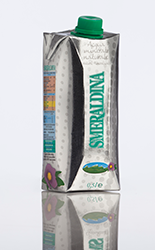 |
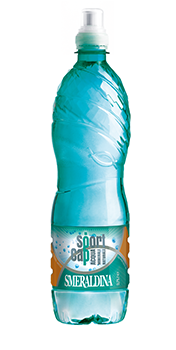 |
Have you thought of diversifying your product?
Many sector companies go the way of bottling two brands in the same facilities, as is permitted by law.
We though, in order to not create confusion among consumers, have chosen to set up an ad hoc company, we sought and found a new source - this also close to Tempio Pausania - built a state of the art facilities and created the Altura brand. It is a product with interesting characteristics, different to those of Smeraldina, but that benefits from the same standards in terms of controls and services. In common obviously, the ownership that comes under the holding GMS Srl, controlled by the Solinas family.
In a market where quantity in numbers holds sway, is there still space for the small and medium-sized enterprise?
The family company continues to express great vitality. The product is not anonymous but “has the face” of the entrepreneur and here size facilities flexibility and rapidity of decisions. I recall the words of a Bocconi professor who blamed the industrial dwarfism of Italian companies… forgetting that this limit is often also our greatest asset, because with many doing the same things, there are many different ways of doing things.
That is to say we Italians are thankfully afflicted by a sort of endogenous and uncoercible entrepreneurial biodiversity…
The family can bring quality to the way of doing business, because common blood leads to passion, each with his or her own ideas enriches the other. In a family grouping there is discussion, growth… and if then the family company has people with good common sense even the divergences can be overcome, with the recognition of a shared organizational model based on the integration of managerial skills. A reminder that companies alone can learn little about themselves.
Does size form a limit for investments?
Ever since my father Giovanni Maria Solinas created the company in 1985, we dedicated great attention to the means of production.
The blowers, ultra clean fillers and the labelers are Krones and the oldest machine is less than 4 years old.
Recently we invested over 2 million euros to update the end-of-line, choosing different suppliers: we bought a twin lane Ocme bundling machines, a Krones palletiser, a Robopac Sistemi pallet wrapper, a Tecnoferrari pallet automation system and, lastly, a Rulmeca gravitational handling storage facilities. Not to forget the Tetra Pak system for packaging water in Tetra Prisma Aseptic.
How do you imagine your company in 5 years time?
Ever more capable of interpreting the demands of a consumer capable of distinguishing and appreciating products for their quality.
A speedier company that continues to operate correctly in a more transparent market, a market with different rules and that does not prosper on disinformation.
I only want to reiterate that my father did not set up the company as a business but in order to find work for his children… and I prefer having some extra worries rather than succumb to the god of “rating” who demands a lower product price, more economical containers, less staff, etc. But that doesn’t pertain to us and our past, neither is it in our future.














